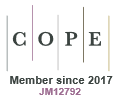Early generation selection in wheat. I. Yield potential
KJ Quail, RA Fischer and JT Wood
Australian Journal of Agricultural Research
40(6) 1117 - 1133
Published: 1989
Abstract
F3 single plant traits were tested as possible selection criteria for increasing yield potential. F3 plants were grown spaced in a glasshouse, while yield was measured in southern New South Wales under irrigation and optimum management. Thc population studied comprised 220 F1-derived lines taken at random from a multiple convergent cross amongst 16 parents representing elite CTMMYT germplasm of the mid 1970s but containing diversity for major dwarfing genes, maturity, leaf angle and other traits. More than 50 traits were determined, comprising numerical components of yield, size and morphology, partitioning ratios, development rates and physiological activities. All F3 traits showed significant genotypic variation which was usually greater for progeny lines than for parents although only occasionally significantly so. Broad sense heritability was generally moderate to high.F3 lines were advanced by single seed descent for replicated F7 and F8 yield experiments, two in each of 1982 and 1983. In each experiment 60-68 progeny lines chosen at random were tested; 44 lines were common to all experiments. Plot size was 8 rows X 5 m, and edge rows and plot ends were discarded. Yield levels were high (mean yield 5.9 t h a 1 at 10Yo moisture) and largely free of interference from lodging and disease. The progeny main effect on grain yield was highly significant, but no progeny line significantly outyielded the best parent. Best correlations with progeny grain yield were given by F3 plant height (r= -0.31 to -0.50 across experiments), F3 kernel weight (r= -0.03 to -0.44), F3 harvest index (r = 0.18 to 0.5 l), F3 leaf angle (r = -0.13 to -0.40, erect leaves favouring high yicld) and F3 spike number (r=0.08 to 0.40). Retrospective selection in F3 using these traits singly at a selection intensity of 25% gave increases in population mean yield (0 to + 12%) and in the proportion of high yielding lines (doubled in some cases), but only selection in F3 for reduced stature is considered worthwhile for advancing yield potential. It is suggested that the ineffectiveness of F3 selection is largely due to genotype by environment interaction, along with the complex multigenic nature of grain yicld.https://doi.org/10.1071/AR9891117
© CSIRO 1989


